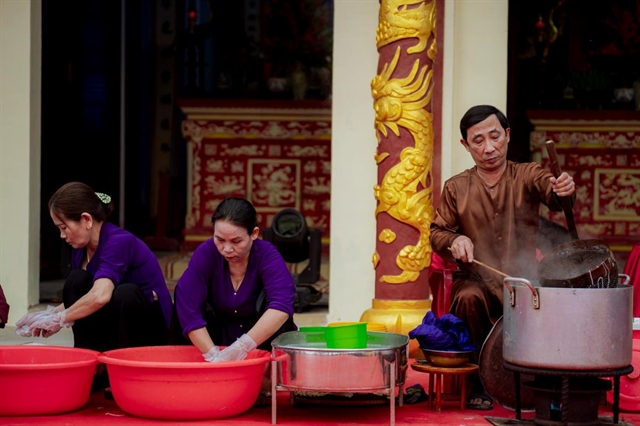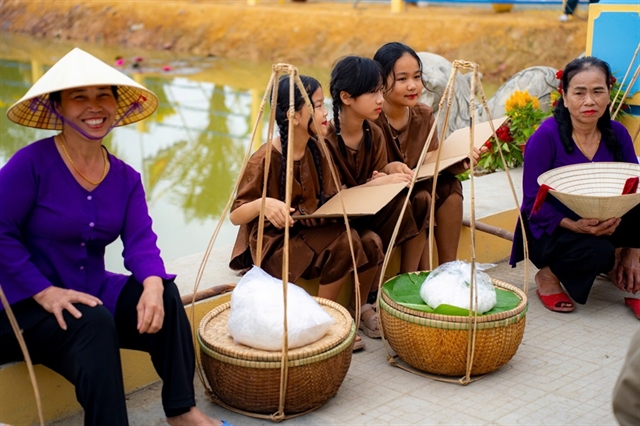 Life & Style
Life & Style
.jpg)
 |
| Local villagers demonstrate rice noodle making in Vân Cù Village in Huế's Hương Toàn Commune. The manufacturing and trade of rice noodles was recognised as National Intangible Heritage by the ministry of Culture, Sports and Tourism. Photo courtesy of Huế City Portal |
HUẾ CITY – The tradition of making rice noodles in Vân Cù Village in Huế's Hương Trà Town has been recognised as National Intangible Heritage by the ministry of Culture, Sports and Tourism, helping to promote the rich variety of culture in central Việt Nam.
The heritage certificate was handed over to the city’s People’s Committee during a ceremony in Hương Trà Town’s Hương Toàn commune on February 20.
The 400-year-old trade village, situated on the Bồ River 10km from downtown Huế, has preserved the craft with its traditional noodle recipe since its female founder first made noodles there centuries ago.
Noodle makers at the village still formulate the rice noodles from pure raw materials, without using any chemical additives or preservatives.
Local authorities said 125 households with 325 craftsmen and women produce between 25 to 28 tonnes of rice noodles each day. Vân Cù noodles are the key ingredient in a series of unique dishes, including Huế-style beef noodle soup and noodles with mussels.
 |
| Vân Cù villagers show off their rice noodles in a ceremony to receive the intangible heritage certification for trade. Photo courtesy of Huế City Portal |
The village is also one of the only localities in central Việt Nam that celebrate the ritual of ancestor worship on January 22 in the lunar calendar.
Previously, other Huế-based cultural features listed as intangible heritage include the region's 300-year-old style of long dress and its folklore, also listed as intellectual property, as well as the art of Ca Huế (Huế folk singing), recognised in 2015; the Dèng textile trade of the Tà Ôi ethnic group in 2016; and festivals such as the Aza Koonh Festival, a spiritual new rice celebration of the Pa Cô ethnic community, recognised in 2019; the Huệ Nam Palace Festival; and the Hòn Chén Temple Festival.
Four other national special heritage sites have also been recognised in Huế.
Now centrally run, the city offers unique tourism services to attract visitors in 2025. This year it will host the National Tourism Year on March 25 and the International Huế Festival.
Huế, the imperial capital in Việt Nam for over 100 years, is a unique destination in central Việt Nam with more than 1,000 preserved relic sites and a variety of different UNESCO world heritage offerings: the Complex of Huế Monuments, Huế royal court music, wooden blocks, urns and royal administrative documents from the Nguyễn Dynasty, as well as literature on Huế's royal architecture and Bài Chòi (folk singing).
Other UNESCO-recognised attractions include the Thái Hoà Palace (Palace of Supreme Harmony) and the tradition of Mother Goddess worship, which includes the three realms of heaven, water and landscapes like forests and mountains.
The central destination has hosted the International Huế Festival for 24 years. This year it expects to welcome up to five million tourists, of which 40 per cent will likely come from abroad. VNS
.jpg)



